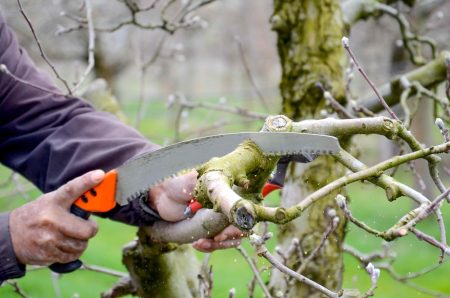Mulching improves the look of garden beds and the yard, helps soil retain moisture, and acts as an insulator. While it’s a good idea to mulch at points throughout the year, should you mulch before winter as well? Here’s why a master gardener days you should.
Meet the Expert
David Angelov is a Master Gardener and the CEO and founder of gardening education platform Plant Parenthood.
Why Mulch Before Winter?
You should mulch your beds, trees, and shrubs before winter. There are a few exceptions, but it’s generally a safe bet to mulch before winter, says David Angelov, a Master Gardener.
Mulch will help control the upcoming temperature drops, stabilizing it against freezing.
“A layer of mulch can help raise the temperature over the soil by 2 to 3F°,” Angelov says. “It’s also great for the soil’s aesthetic appearance.”
Mulch may also prevent or delay frost heave. Frost heave is when soil repeatedly expands and contracts because of freezing and thawing. Frost heave can be dangerous for plants, especially perennials, because it damages the soil and severs roots.
Want more gardening tips? Sign up for our free gardening newsletter for our best-growing tips, troubleshooting hacks, and more!
How to Mulch Before Winter
The best way to mulch is to start with an evaluation, Angelov says. A garden evaluation can be done by a consultant or by a DIY gardener, and it involves assessing the type of soil, the plants, the climate, and needs.
- Prepare the bed: Clean the beds by trimming dead or damaged leaves or branches. Pinch off poor leaves. Finish by raking the soil.
- Choose a mulch: Choose the type of mulch, whether organic or inorganic. Organic mulch will decompose and add nutrients to the soil, while inorganic mulch will last longer but not add to the soil.
- Calculate mulch needed: With a mulch calculator, estimate the amount and cost of the mulch.
- Transport the mulch: Move the mulch bags to the site in a wagon or wheelbarrow.
- Apply the mulch: Spread the mulch by shovel evenly around the beds. Keep the mulch several inches away from the plants.
- Check the depth: Apply the mulch to about 3 inches. Add mulch as needed, keeping in mind that the mulch will settle over time.
When Mulching Isn’t Needed
There are few situations when you should not lay down mulch in beds or shrubs, Angelov says. A few exceptions and cautions, though:
- Clean the beds: You want to be sure to thoroughly clean the beds first before laying down the mulch.
- Free the leaves: Avoid trapping leaves, limbs, or other live parts of the plants under the mulch.
- Not for vegetable gardens: In the winter, a vegetable garden should not be covered with traditional pine or bark mulch. Instead, it should be left as-is.
Tips for Mulching
For best mulching before winter, use these tips:
Use Quality Mulch
Be sure to use true bark mulch, Angelov says. Much of the bagged commodity mulch contains chipped-up pallets and lumber. That mulch has impurities. The best type of mulch to use is 5-percent hemlock mulch, which has a stable, rich color. It also breaks down better instead of leaving big sticks behind.
Buy in Bulk
Buy mulch in bulk instead of in bags, whenever possible. Bulk mulch is less expensive than bagged mulch and doesn’t create plastic waste in the form of discarded bags. It’s helpful, too, if you can visit the nursery and view the mulch before purchasing it.
Add a Layer of Evergreen Boughs
Adding evergreen boughs is an excellent way to add another 2 to 3 F° of protection to the soil—in addition to the 2 to 3 F° already added by the bark mulch.
“These can be boughs from evergreens or you can purchase evergreen boughs,” says Angelov. “You then layer and intertwine the boughs on the bark mulch. This method captures the moisture beautifully.”
Try River Rock
A good way to mulch is to place river rock on top of weed barrier. This lasts longer than purely using bark mulch, though it does need some touchups and reapplication. The downside of rock mulch is that it limits flexibility in the garden.
Touch Up
Be sure to reapply bark mulch once a year. In winter, there should be no need to reapply the mulch except for occasional touch-ups if it gets blown or washed away.
Read the full article here









